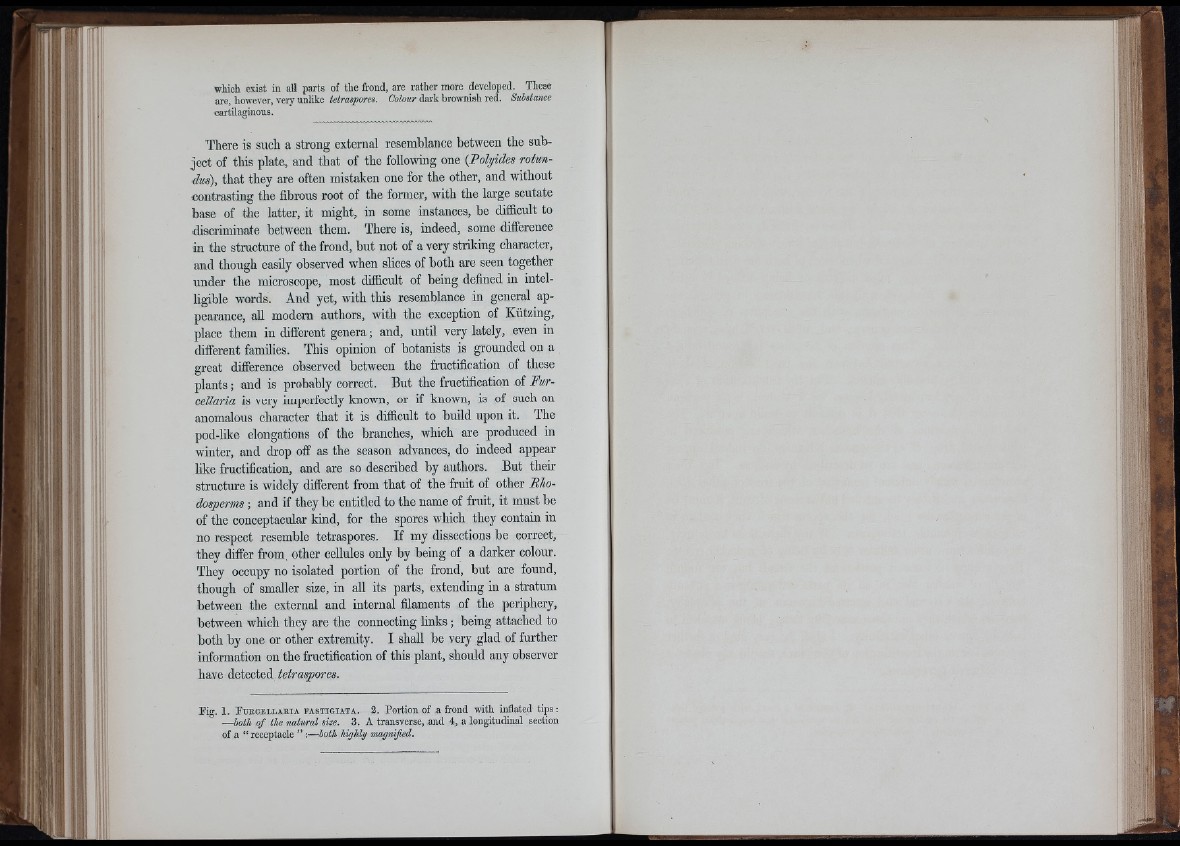
; J- J
'i r . t 'i
which exist in all parts of the frond, are rather more developed. Tliese
are, however, very unlike tetraspores. Colour dark brownish red. Suhstance
cartilaginous.
There is such a strong external resemblance between the subject
of this plate, and that of the following one {Polyides rotundus),
that they are often mistaken one for the other, and without
contrasting the fibrous root of the former, with the large scutate
base of the latter, it might, in some instances, he difficult to
discriminate between them. There is, indeed, some difference
in the structure of the frond, but not of a very striking character,
and though easily observed when slices of both are seen together
under the microscope, most difficult of being defined in intelligible
words. And yet, witb this resemblance in general appearance,
all modern authors, with the exception of Kützing,
place them in different genera ; and, until very lately, even in
different families. This opinion of botanists is grounded on a
great difference observed between the fructification of these
plants ; and is probably correct. But the fructification of Fur-
cellaria is very imperfectly known, or if known, is of such an
anomalous character that it is difficult to build upon it. The
pod-like elongations of the brancbes, which are produced in
winter, and drop off as the season advances, do indeed appear
like fructification, and are so described by authors. But their
structure is widely difierent from that of the fruit of other PJio-
dosperms ; and if they be entitled to the name of fruit, it must be
of the conceptacular kind, for the spores which they contain in
no respect resemble tetraspores. If my dissections be correct,
they differ from, other cellules only by being of a darker colour.
They occupy no isolated portion of the frond, but are found,
though of smaller size, in all its parts, extending in a stratum
between the external and internal filaments of the periphery,
between which they are the connecting links ; being attached to
both by one or other extremity. I shall be very glad of further
information on tbe fructification of this plant, should any observer
have detected tetraspores.
Fig. 1. F u e c e l l a e ia f a s t ig ia t a . 2. Portion of a frond with inflated tips :
— both o f the naiural size. 3. A transverse, and 4, a longitudinal section
of a “ receptacle ” :— both t
j ;Di
ti:
1 '
lm